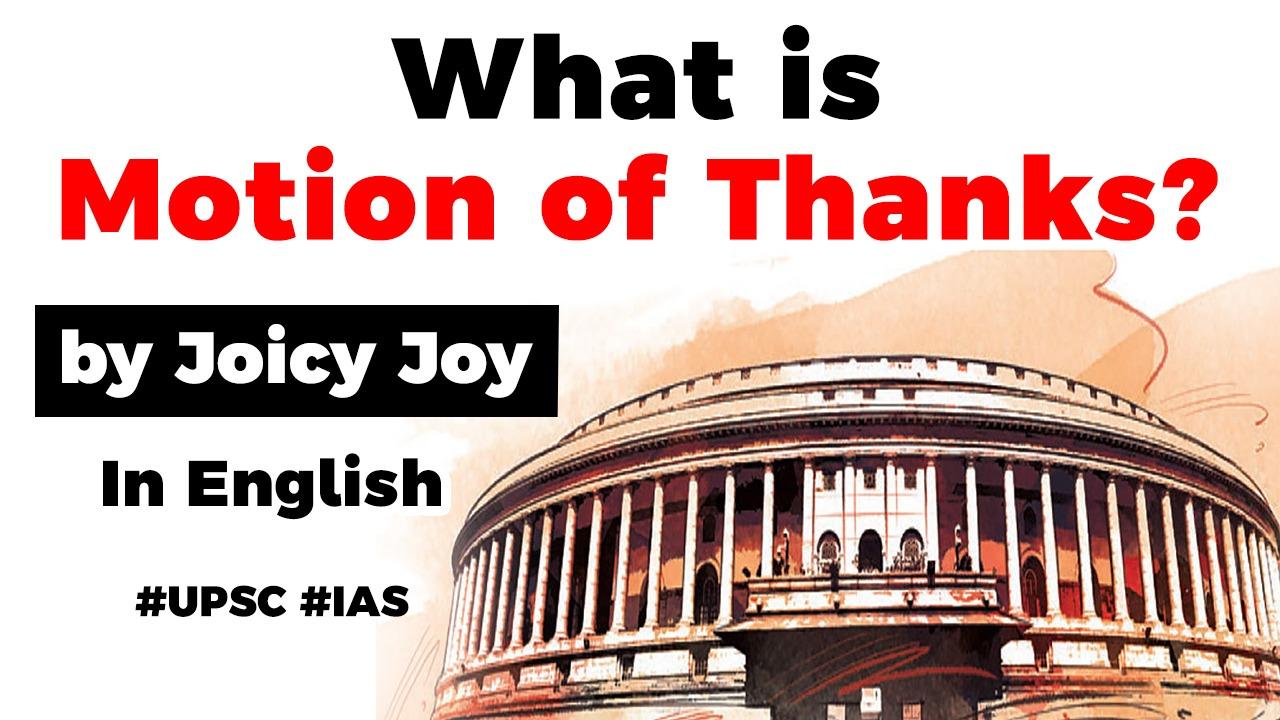Table of Contents
CURRENT AFFAIR
- Recently, a debate on Motion of Thanks to the President’s Address was held in Lok Sabha.
President’s Address
- Article 87 provides for the special address by the President.
- The article provides that at the commencement of the first session after each general election to the House of the People and at the commencement of the first session of each year, the President shall address both Houses of Parliament assembled together and inform Parliament of the causes of its summons.
- Such an Address is called ‘special address‘.
- No other business is transacted till the President has addressed both Houses of Parliament assembled together.
- This Address has to be to both Houses of Parliament assembled together.
- In the case of the first session after each general election to Lok Sabha, the President addresses both Houses of Parliament assembled together after the members have made and subscribed the oath or affirmation and the Speaker has been elected.
Content of the President of Address
- The President’s Address is the statement of policy of the Government and, as such, is drafted by the Government.
- The Address also indicates, in broad terms, items of legislative business which are proposed to be brought during the sessions to be held in that year.
Discussion on the Address by Motion of Thanks
- The address of the president, which corresponds to the ‘speech from the Throne in Britain’, is discussed in both the Houses of Parliament on a motion called the ‘Motion of Thanks’.
- Members can discuss and debate on it.
- Generally, three days are allotted for the discussion on the Motion of Thanks.
- If any of the amendments are put forward and accepted then the Motion of Thanks is adopted in the amended form.
- Amendments may refer to matters contained in the Address as well as to matters which, in the opinion of the member, the Address has failed to mention.
- At the end of the discussion, the motion is put to vote.
Significance of Motion of Thanks
- The Motion of Thanks must be passed in the House. Otherwise, it amounts to the defeat of the government.
- It is one of the ways through which the Lok Sabha can also express a lack of confidence in the government.
WAYS THROUGH WHICH THE LOK SABHA CAN ALSO EXPRESS A LACK OF CONFIDENCE IN THE GOVERNMENT
- Rejection of a money bill.
- Passing a censure motion or an adjournment motion.
- The defeat of the government on a vital issue.
- Passing a cut motion.
LEGISLATIVE POWERS OF THE PRESIDENT
- The parliament is composed of president, Lok Sabha and Rajya Sabha so, president of India is a inseparable part of Indian Parliament.
- President has popower to summon or prorogue the two houses of parliament. After a prorogation, the house must be summoned within 6 months.
- The President may dissolve the Lok Sabha.
- After the general Elections, president addresses both the houses of the parliament. He may address either house or even a joint sitting.
- The President has power to nominate 12 members of Rajya Sabha if they excelled in Art, Literature, Science, Social Science, Culture etc. (Article 80).
- A Bill passed by the parliament becomes an act only after president has given assent to it.
- There are some bills which require prior recommendation of the President. This means these bills need to be introduced in the parliament only on the recommendation of the President.
Latest Burning Issues | Free PDF






















 WhatsApp
WhatsApp